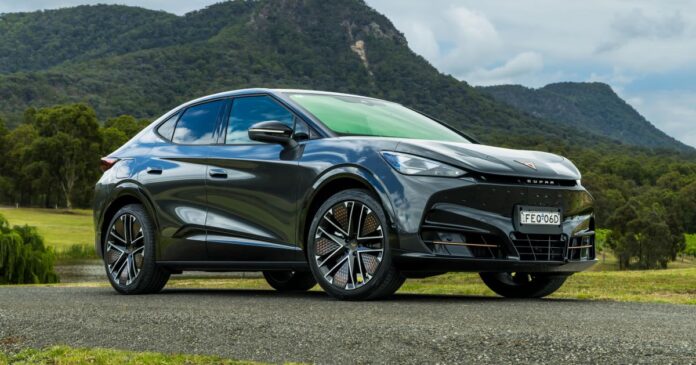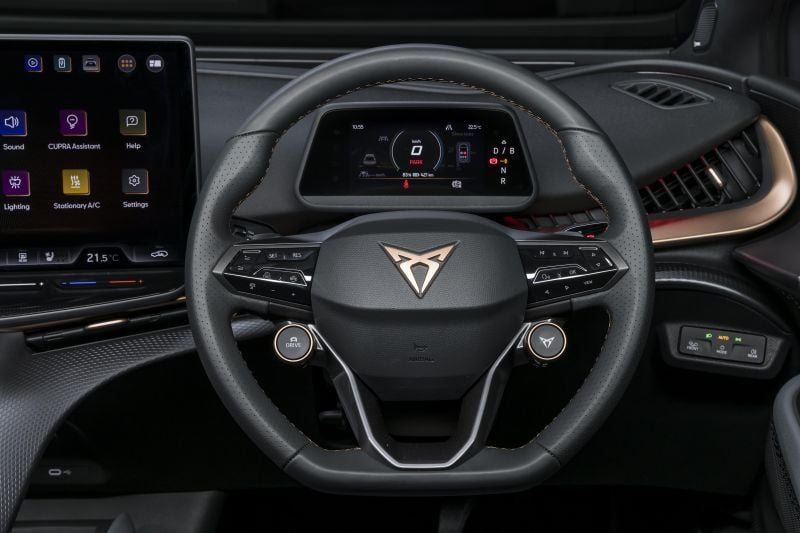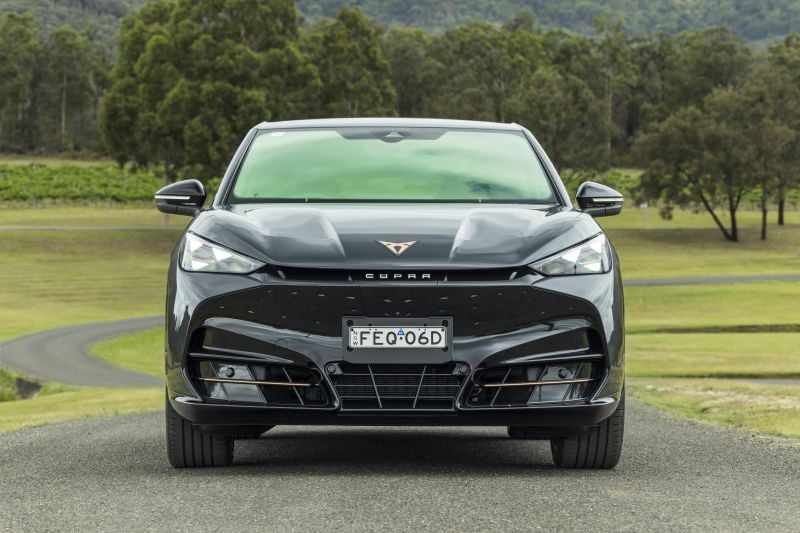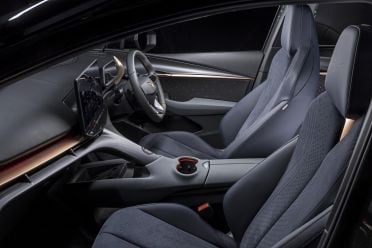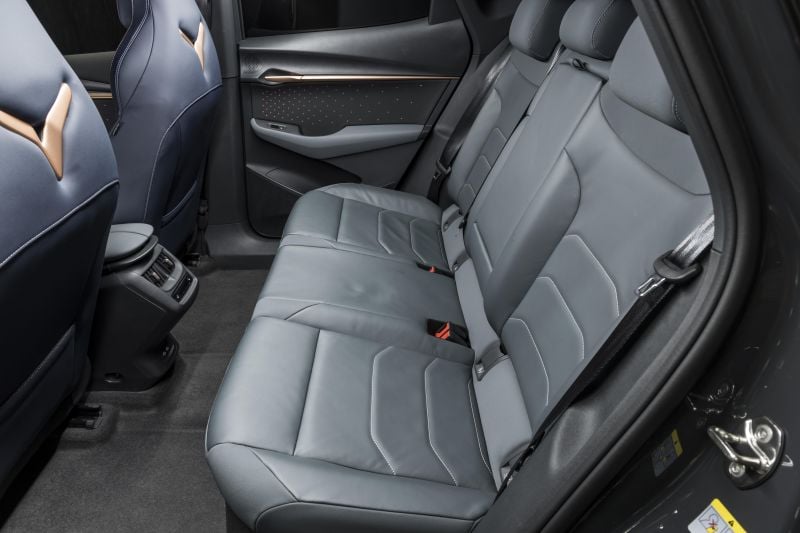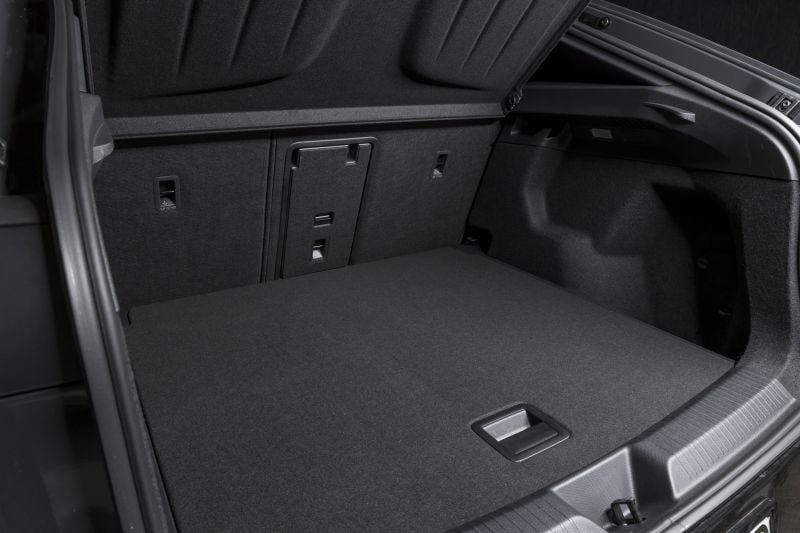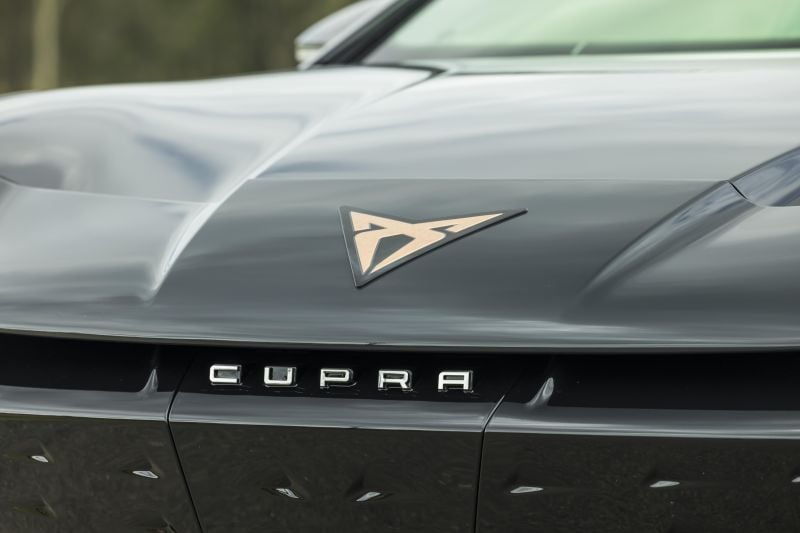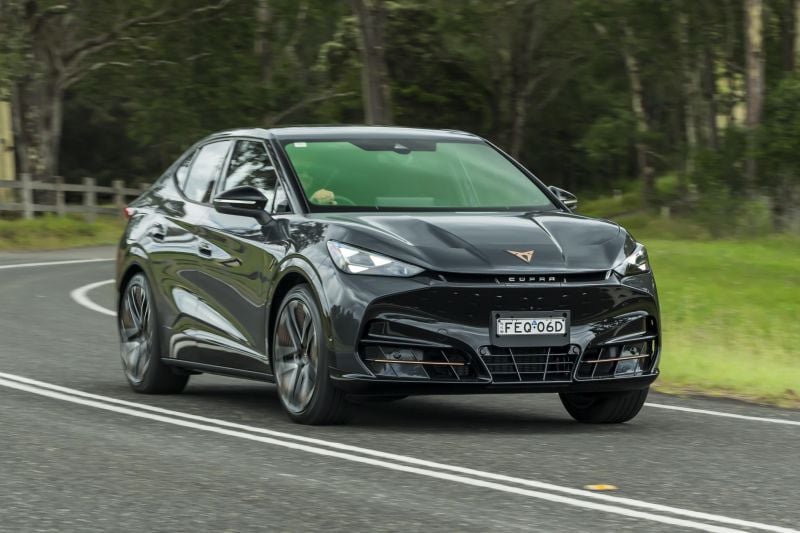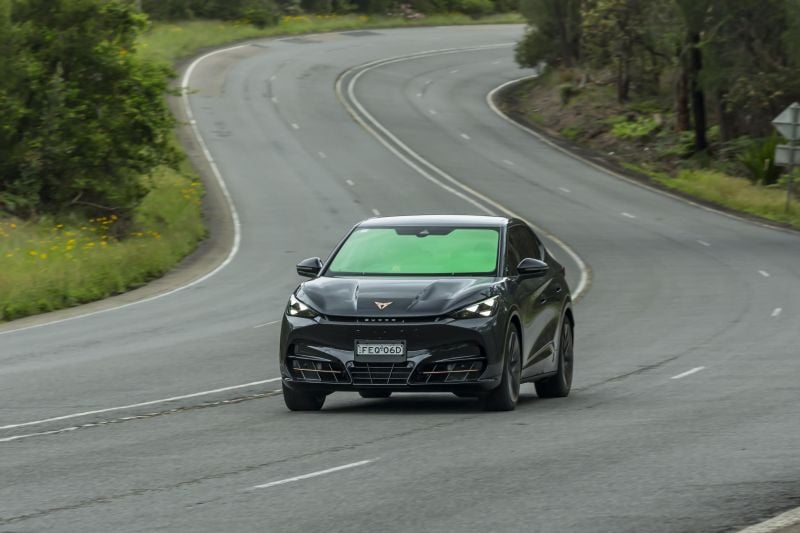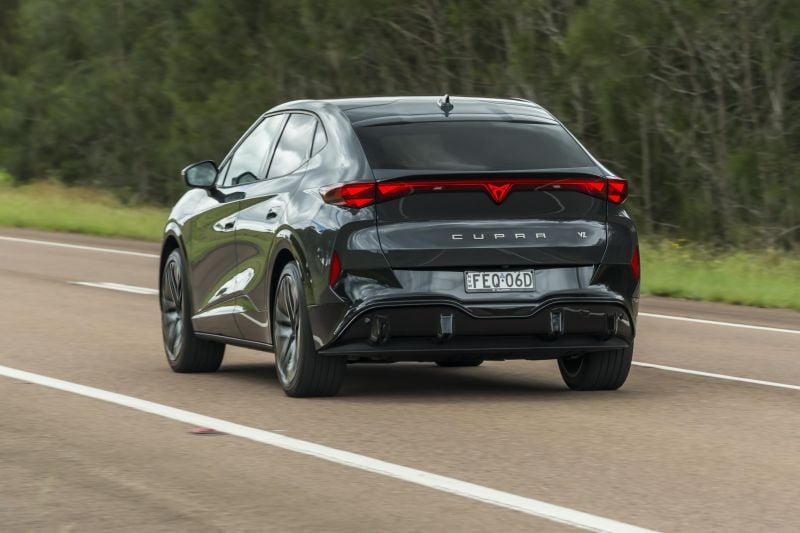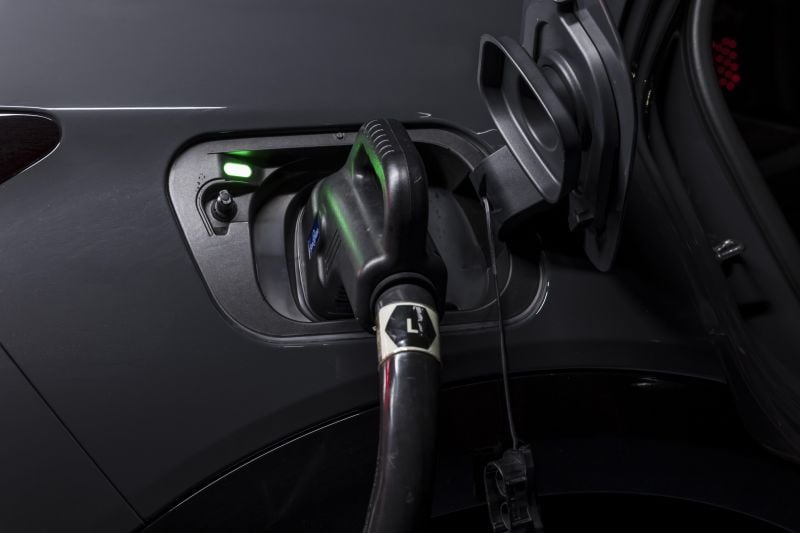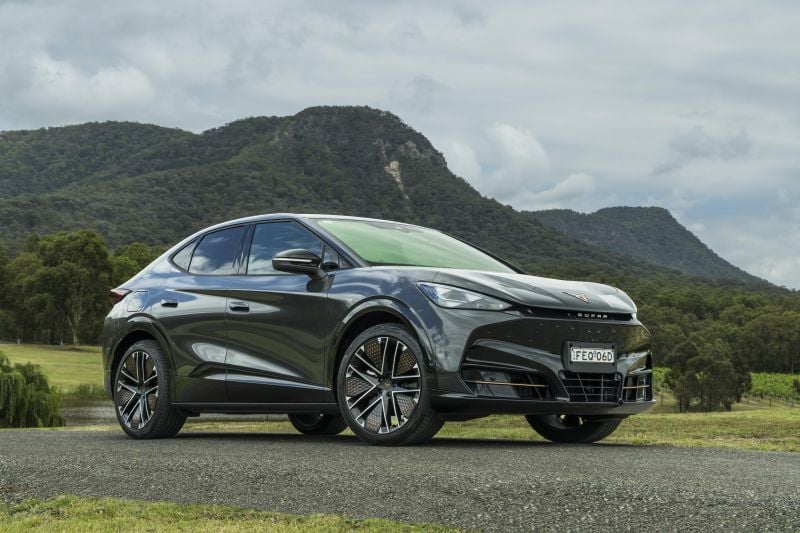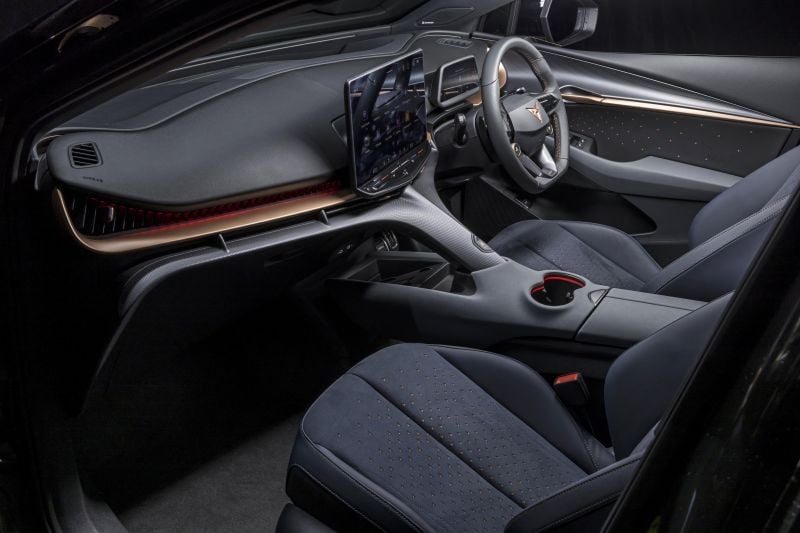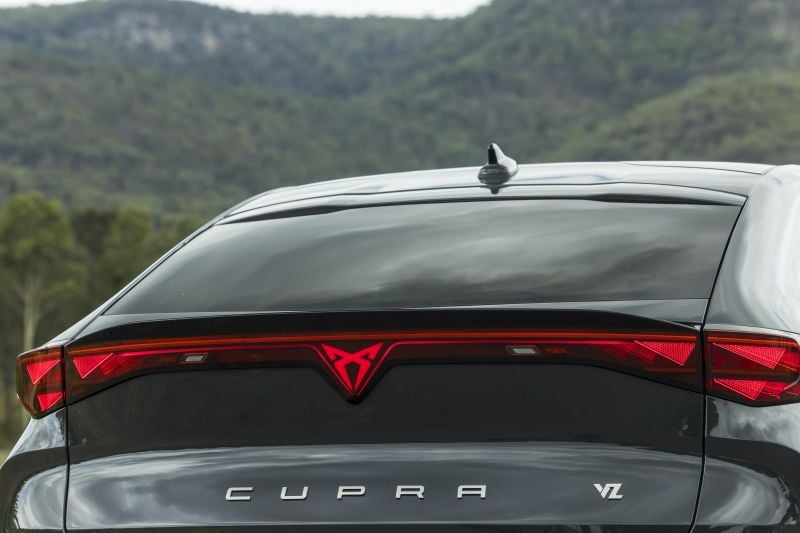After giving Australia almost no electrified vehicles for the longest time, it seems the Volkswagen Group is about to smother us with choice.
The German carmaker’s MEB modular electric vehicle (EV) platform has been in production for several years now and serves the basis of a number of models across various brands, but Australia has missed out on all but one of them so far.
Locally, it started with the Cupra Born hatchback last year. The Spanish brand’s twin to the upcoming Volkswagen ID.3 has been an only child in Australia since then, but it’ll soon be getting a family reunion with the VW ID.4 and ID.5 mid-sized SUVs, as well as the Skoda Enyaq, Audi Q4 e-tron and their new larger sibling – the 2025 Cupra Tavascan.
Effectively Cupra’s version of the ID.5, like the Born is to the ID.3, the Tavascan will be the Spanish brand’s second dedicated electric vehicle globally and is due to hit Australian driveways around March or April of 2025. While that is relatively early in the global rollout, the Tavascan will be around two to three months later to arrive than initially promised.
In typical Cupra fashion, the Tavascan is distinctively styled and firmly pitched as the emotive, sporty offering relative to its platform mates. Beyond its cousins within the Group, it has the likes of the Tesla Model Y and Kia EV6 firmly in its sights.
Price? We’re not sure yet, though Cupra has assured us the two-strong model range will be priced in the $60,000s at base level and extend into the $70,000 bracket, positioning the Tavascan under the related but dimensionally larger Skoda Enyaq Coupe.
Following our recent international drive review, Cupra Australia gave us a stint behind the wheel of a pre-production prototype named ‘Frank’, short for Frankenstein (more on that later), on local roads in New South Wales for this early local preview drive.
How does the Cupra Tavascan compare?
View a detailed breakdown of the Cupra Tavascan against similarly sized vehicles.

Cupra
Tavascan
Australian pricing and specifications are still to be fully detailed, but Cupra’s local team has indicated the single-motor Tavascan Endurance will wear a sticker starting with a ‘6’, while the dual-motor VZ price will start with a ‘7’.
| Model | Indicative starting price |
|---|---|
| 2025 Cupra Tavascan Endurance | $60,000-$69,990 |
| 2025 Cupra Tavascan VZ | $70,000-$79,990 |
While the Tavascan’s entry point perhaps won’t be as low as other Chinese-made EVs (yes, the Cupra is coming out of a joint-venture factory in China), its specifications better align with mid-spec versions of rivals like the Model Y Long Range, and it will likely be more affordable spec-for-spec versus the Hyundai Ioniq 5 and Kia EV6.
For reference, the Skoda Enyaq with the same drivetrains is priced from $69,990 and $83,990 for the single-motor and dual-motor, respectively. It’s unclear whether the Volkswagen ID.5 will also be positioned as a more premium offering than the Cupra, though like the Enyaq it will be sourced from Europe.
To see how the Cupra Tavascan lines up against the competition, check out our comparison tool
The interior of the Tavascan is unlike any other new model’s on the market, and largely for the right reasons.
Cupra has been working hard to distinguish itself from the wider Volkswagen Group with its designs, particularly with its bespoke models – ie: the ones not already based on SEATs.
The Tavascan’s interior gets an impressive winged blade insert finished in the brand’s signature copper colour, and it sits above a skeletal-like central structure finished in a textured plastic.
Disappointingly, the central vane feels a little cheap to the touch, though it’s not really a touch point. A similar plastic is used for the large door ornamentation inserts – it all looks cool from a distance, just don’t touch it. The steering wheel also has fiddly touch-capacitive buttons, which will get annoying during dynamic driving (more on that later).
Ahead of the driver is a small 5.3-inch Digital Cockpit instrument cluster similar to the one in the smaller Born as well as other MEB products. While simple, it at least offers critical info in the driver’s line of sight.
‘Frank’ the test car was named as such because it was a bit of a Frankenstein when it comes to specs. The front seats were finished in Dark Night microfibre, as will be standard in the Australian-spec VZ, though the second row was trimmed in grey leather, which will be part of the optional Extreme Package.
The suede material up front is partly made from recyclable materials, and the electric adjustment for the driver offers a wide range of movement to find a comfortable driving position – they look great too.
Our pre-production test vehicle was also fitted with an augmented reality head-up display that’s available in overseas markets and worked well to project cool animations and graphics on the windscreen, though it’s unclear whether this feature will be available on Australian models.
The perception of quality is fine but not standout like the overall design. Those aforementioned cheaper feeling plastics detract from what is a pretty cool ambience. The wetsuit-like material used on the centre console and doors is cool though, and I’d be interested to see the Extreme Pack’s Sabelt-branded bucket seats.
Our time with the Tavascan was brief, but it will be one of the first Cupra models to launch in Australia with the brand’s latest infotainment system.
It has a permanent toolbar at the base of the screen, showing the chosen temperature for the dual-zone climate control, and a revised interface that in our experience offers great response and resolution.
Wireless Apple CarPlay and Android Auto will be standard in Australia, as will a wireless smartphone charger, though like the Born embedded satellite navigation will not because MEB-based cars in Australia aren’t compatible with the connected vehicle module that is tied to features like native navigation – the Skoda Enyaq also suffers from this.
Cupra hasn’t confirmed if or when it will offer connected services in Australia at this stage, though it seems the Volkswagen brand will debut connected services for the Group with the ID.4 and ID.5 in 2025.
The second row is of good proportions given the Tavascan is classed as a mid-sized SUV. There’s great leg and knee room for taller passengers, while headroom is decent despite the sloping roofline.
Being based on a dedicated EV architecture, the flat rear floor means the fifth passenger in the middle seat isn’t subjected to a driveline hump. That means if you have multiple kids that are likely to get irritable with each other, there won’t be life or death games of footsies in the back… hopefully.
There are also air vents at the rear of the centre console, which are hooked up to a third zone of climate control that will be standard across the Australian range.
Other amenities include map pockets on the backs of the front seats, a fold-down centre armrest with cupholders, and bottle holders in the doors. The requisite ISOFIX and top-tether child seat anchor points are all there too.
Despite its coupe roofline and sloping tailgate, the Tavascan quotes an impressive 540 litres of cargo capacity behind the rear seats. There’s an adjustable load floor to make a level area with the seatbacks, too.
As is the case with a number of EVs, there’s no spare wheel in the Tavascan – expect a repair kit.
| Dimensions | Cupra Tavascan |
|---|---|
| Length | 4644mm |
| Width | 1861mm |
| Height | 1597mm |
| Wheelbase | 2766mm |
| Cargo capacity | 540 litres |
To see how the Cupra Tavascan lines up against the competition, check out our comparison tool
Two electric drivetrains will be available for the Tavascan in Australia.
| Specifications | Tavascan Endurance | Tavascan VZ |
|---|---|---|
| Drive type | Single-motor rear-wheel drive | Dual-motor all-wheel drive |
| Power | 210kW | 250kW |
| Torque | 545Nm | 134 + 545Nm |
| 0-100km/h | 6.8 seconds | 5.5 seconds |
| Range (WLTP) | 534km | 499km |
| Battery | 77kWh lithium-ion | 77kWh lithium-ion |
| Max AC charging capacity | 11kW | 11kW |
| Max DC charging capacity | 135kW | 135kW |
Note: the VZ’s quoted WLTP driving range drops to 463km if buyers opt for the optional Extreme Package, as the included forged alloy wheels are wrapped in performance tyres.
While the vehicle we drove wasn’t completely indicative of Australian specification, we were seeing around 22-23kWh/100km during the dynamic portion of the drive loop in Cupra mode, settling down to 17-18kWh/100km once we hit the highway and encountered some peak-hour traffic in Range mode.
To see how the Cupra Tavascan lines up against the competition, check out our comparison tool
We got a 90ish-minute stint behind the wheel of the Tavascan VZ prototype, from north of Sydney back to Cupra’s local HQ in Zetland, including a section of the twisty old Pacific Highway.
Having recently driven the related Skoda Enyaq Coupe in both single- and dual-motor variations, I was interested to see if Cupra had succeeded in giving the Tavascan a distinct personality like it has with its combustion models.
Our drive on the Pacific Hwy early on the drive route gave me a chance to drive the dual-motor Tavascan with a bit of anger to test out its dynamic capability and acceleration response – and I’m left with mixed feelings.
There’s no doubt it feels quick in this specification. While 0-100km/h acceleration in 5.5 seconds isn’t Tesla Performance-quick, it’s certainly quick enough for the average buyer and the immediacy of EV torque response is a very different experience for those coming out of a combustion-engined vehicle.
Cupra’s 5.5-second claim feels accurate by the seat of the pants, and the way you can blast the Tavascan out of corners is quite enjoyable.
But while it has solid grunt in the low- and mid-range, you cannot defy physics. Cupra hasn’t quoted specific kerb weight figures locally, but the dual-motor version weighs between 2200 and 2300kg, which is a bit porky.
So, even though the steering is quick and accurate, you can feel the Tavascan’s weight shift from side to side as you thread corners, particularly tighter ones, to the point where it feels a little out of its comfort zone. Annoyingly, you’ll also find the steering wheel’s touch capacitive controls will see you skip tracks or adjust volume by accident if you hold the steering wheel at 3 and 9 o’clock.
Even the steering feel isn’t as sweet as what I have come to expect from the Cupra brand. Drive a Leon or Formentor and you get this wonderfully accurate and fluid feeling that seems at one with the vehicle’s dynamics. The Tavascan just didn’t feel quite at home on these twisty sections of road.
This was despite playing with the various drive modes including Sport and Cupra. While there was a noticeable shift in the car’s personality and feel, it didn’t necessarily translate to significant gains in driver enjoyment. It’s worth noting the prototype wasn’t fitted with performance tyres despite having optional forged wheels, which could change things.
I also noticed while accelerating onto a 110km/h freeway on-ramp that the dual-motor powertrain felt like it tapered off a little, lacking some meat at the upper end, which to be fair is common in a lot of electric vehicles.
But once on the highway, the Tavascan really shined. I popped it into its Range mode to optimise, well… range, and the Tavascan ate up the remainder of the commute down the Pacific and back into Sydney, which included steep inclines and declines at 110km/h, as well as peak-hour Sydney traffic heading back into Zetland.
It rides beautifully over slabbed highways and the MEB platform has made noticeable gains in noise insulation compared to even the latest MQB evo toolkit. As a tourer and commuter, the Tavascan is rather excellent.
Australian models will come fitted with Travel Assist, which combines adaptive cruise and lane centring functions for semi-autonomous highway assistance, and even this prototype model was impressively well calibrated.
The AR head-up display offers some cool graphics and animations to show the lane markings ahead or adjustments to the assistance systems – overseas models with navigation get cool turn-by-turn prompts, too.
While it was cool, we’re not sure if it’s coming to Australia – the Born misses out on this feature Down Under.
Beyond that, there’s blind-spot monitoring and rear cross-traffic assist, and the surround camera that’s optional in the base car and standard in the VZ helps to improve outward visibility.
I’ll be interested to drive the single-motor Tavascan Endurance in the future, as based on my time with the Enyaq Sportline versus the RS, I’m inclined to think the rear-drive version will be the sweeter drive.
To see how the Cupra Tavascan lines up against the competition, check out our comparison tool
The Tavascan will be available in two core trim levels in Australia.
Tavascan Endurance standard features:
- 19-inch Vulcano alloy wheels
- Hands-free power tailgate
- Steering wheel with satellite buttons
- Paddle shift regen control
- Heated steering wheel
- Tri-zone climate control
- Soul Black cloth/leather upholstery
- 5.3-inch digital instrument cluster
- 15-inch infotainment touchscreen
- Wireless Apple CarPlay, Android Auto
- Wireless smartphone charger
- Keyless entry with Sit to Start
- Selectable drive modes
Tavascan VZ adds:
- 21-inch Katla alloy wheels
- Matrix LED headlights
- Fixed panoramic sunroof
- Adaptive dampers
- Interior Package
To see how the Cupra Tavascan lines up against the competition, check out our comparison tool
Both variants will be available with a specific option package.
Interior Package: $TBC (Endurance)
- 20-inch Heckla alloy wheels
- Dark Night microfibre interior
- 12-way power-adjustable front seats
- Heated front seats
- Surround-view camera
- 12-speaker Sennheiser premium audio
- Ambient interior lighting
- Illuminated scuff plates
Extreme Package: $TBC (VZ)
- 21-inch Etna forged alloy wheels
- Performance tyres (463km WLTP range)
- Enceladus Grey leather interior
- Cup Bucket heated, ventilated front seats
The Tavascan hasn’t received an ANCAP rating as yet, but it has already achieved a five-star Euro NCAP safety rating. Given the two independent safety organisations are aligned in their criteria, we expect ANCAP to also award it five stars.
Standard safety equipment includes:
- 7 airbags
- Autonomous emergency braking (AEB)
- Auto high-beam
- Adaptive cruise control
- Blind-spot monitoring
- Lane Assist
- Lane centring assist
- Lane keep assist
- Parking sensors – front, rear
- Rear cross-traffic alert
- Reversing camera
- Travel Assist
- Adaptive cruise control
- Lane centring assist
To see how the Cupra Tavascan lines up against the competition, check out our comparison tool
Cupra’s local range is covered by a five-year, unlimited-kilometre warranty.
| Running costs | Cupra Tavascan |
|---|---|
| Warranty | 5 years, unlimited kilometres |
| Roadside assistance | 5 years |
| Service intervals | TBC |
| Capped-price servicing | TBC |
| Total capped-price service cost | TBC |
While full aftersales details for the Tavascan are yet to be announced for the Australian market, we’re expecting Cupra to offer competitive service packages based on its existing form.
To see how the Cupra Tavascan lines up against the competition, check out our comparison tool
This early taste of the Tavascan on local roads leaves me merely ‘whelmed’ but still cautiously optimistic.
A lot of our verdict on the Tavascan hinges on pricing, which is still unknown. Should the Endurance start in the low-$60,000s it could be pretty good value, while high-$70,000s for the VZ seems a step too far.
That said, other European-branded SUV-coupes cost substantially more – the Audi Q4 Sportback e-tron and BMW iX2 cost tens of thousands more, for example.
The Tavascan definitely has a cool factor compared to its VW Group cousins; it’s edgier than the ID.5 and Enyaq, and will likely be cheaper than both as well. But the driving experience isn’t quite as different as it is between the Leon or Formentor and the Golf or T-Roc, sadly.
The lack of certain features available in Europe will no doubt also annoy some, given numerous rivals offer connected technologies and full suites of tech features – even if it’s merely a box-ticking exercise.
And, whether Cupra likes it or not, the inevitable comparisons with rivals from Tesla and Chinese brands may prove challenging. The Model Y and incoming BYD Sealion 7 will be stiff competition for the Spanish EV.
Still, Frank the Tavascan shows great promise for what’s to come, pending pricing and market positioning. No doubt some existing Cupra owners wanting something larger and electrified will be keeping a close eye on this one, and rightly so.
Interested in buying a Cupra Tavascan? Get in touch with one of CarExpert’s trusted dealers here
Click the images for the full gallery
MORE: Everything Cupra Tavascan

